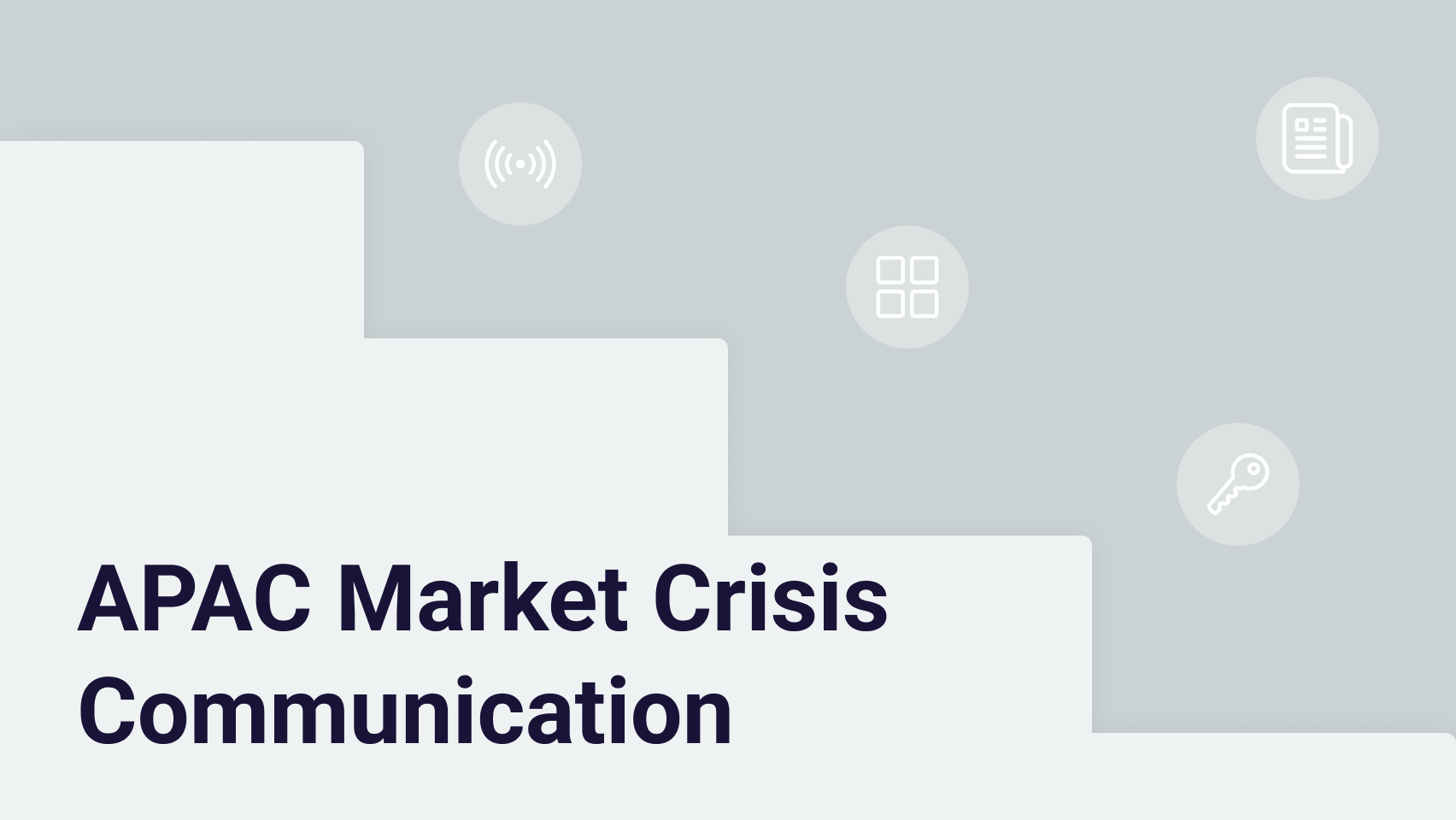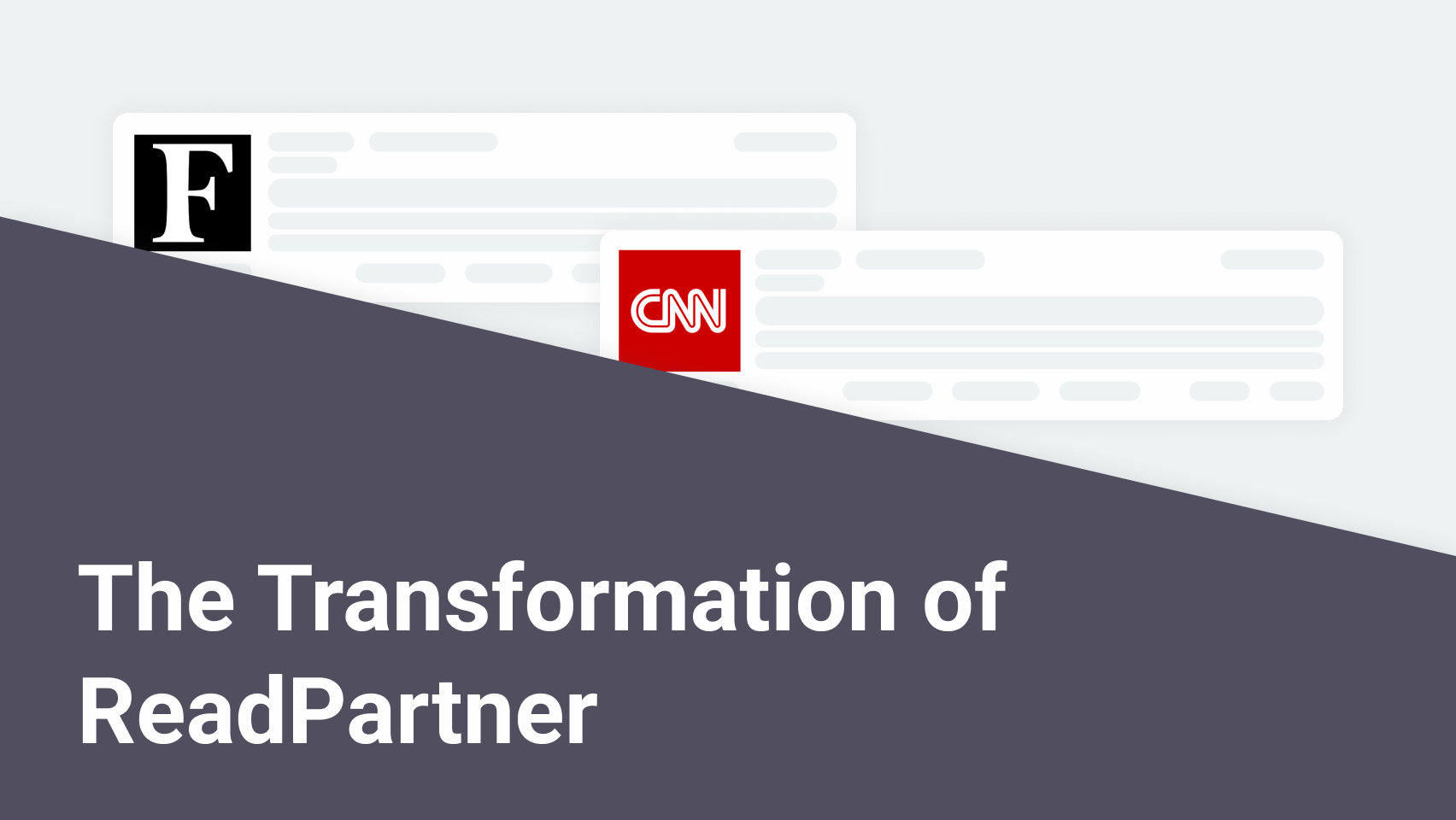Crisis Communication in the APAC Market: How Media Monitoring Helps Companies Respond Fast

The Asia-Pacific (APAC) region is the fastest-growing market with a population of nearly 5 billion, and it is no surprise that businesses from other regions take more and more interest in it. The opportunities this region offers are immense, but so are the risks. The region comprises many countries that can boast high cultural diversity, all the while the news cycles fast, and online communities are highly active. These factors bring significant complexity to communications and can be challenging for PR teams to deal with.
Succeeding in such an environment requires companies to be prepared to act fast and stay agile. Media monitoring platforms are central to this preparation: no manual method can rival the speed of news and social media data collection such platforms provide. This allows businesses to implement effective crisis communications strategies and detect reputation threats before they escalate and cross borders.
The importance of fast crisis communication in today’s digital world
Modern crisis communication is defined by its speed. What once could be addressed in a press release or an interview the next day now demands immediate attention and response. People are online much more regularly than ever, and information, amplified by social media, spreads at unprecedented speeds. Even a delay of a few hours in response can shape the way businesses are perceived and cause reputational harm.
The stakes are especially high in APAC because of the region’s complexity. Multiple languages, diverse cultural norms, fragmented media, and highly engaged online communities bring unique challenges to crisis communication. For example, messaging that resonates positively with Japanese audiences can be met with indifference in India and cause a backlash in Australia. Without tools that can quickly collect reactions and analyze public sentiment, businesses can be left in the dark and miss warning signs to adjust their communications.
Common crisis triggers in the APAC region
There are crisis triggers that are common in the APAC region, but it is important to remember that APAC consists of many different countries, and specifics may vary. We will list common crisis triggers and provide examples of such cases.
1. Cultural missteps
Dolce & Gabbana ran ads in 2018 showing a Chinese woman struggling to eat Italian food with chopsticks. This caused an uproar in China with audiences seeing this ad as mocking Chinese culture, leading to boycotts, event cancellations, and major e-commerce platforms pulling D&G products.
2. Regulatory issues
In 2022, Google was fined by the Competition Commission of India for $162 million regarding its anticompetitive Android practices. This fine attracted a lot of public attention, sparking discussions across traditional and social media about Google’s business practices.
3. Product safety concerns
Four Seasons Durian’s mini D24 durian mooncakes were found to contain excessive amounts of a bacterium linked to food poisoning in 2024. This led to the Singapore Food Agency ordering a recall of all batches of the product.
4. Labor disputes
In 2025, workers in India went on strike following Samsung’s suspension of workers’ union office bearers. This caused production disruption for Samsung and reflected on their brand’s reputation.
5. Misinformation and negative press
Tata Consultancy Services, a major Indian multinational IT services and consulting company, faced misinformation spread in 2025 on social media with posts claiming that around 80,000 employees were laid off. In truth, the number was much smaller: 12,000, or around 2% of their workforce, but it still caused panic and damaged their reputation and workforce morale.
How media monitoring supports crisis communication
The effectiveness of crisis communication depends heavily on timing. The earlier a crisis can be detected, the easier it is to deal with, and the more effective your communication efforts are. Consider these two scenarios:
- A company detects misinformation starting to appear on social media or in small niche news outlets, and responds immediately by clarifying the situation, for example, making a public statement and contacting the news outlets and influencers who amplify the inaccurate story. Their actions hamper the spread of misinformation and keep the brand’s reputation healthy.
- Misinformation starts appearing on social media or in small niche news outlets, but is left unnoticed at this stage. In a few days, it goes viral, and large news outlets start picking up the story. In this situation, even if the company can prove that the story is not true, it is too widespread to deal with effectively: many people who are aware of the situation will miss the corrections, clarifications, and retractions published, and undoing the reputational damage will take a long time and a lot of effort on the company’s part.
That is why media monitoring is barely an optional tool for businesses nowadays: it can handle large volumes of publications, bringing important updates to the attention of organizations promptly.
1. Real-time detection of negative mentions
Media monitoring platforms continuously scan traditional and social media. With AI-powered sentiment analysis, they can understand the tone of the mentions, flag negative ones, and alert businesses if negative mentions volume suddenly spikes. This allows organizations to catch issues when they are still just rumors, rather than national headlines.
2. Tracking narratives over time
Monitoring is not only about counting mentions, but understanding the story as it evolves and the direction it is taking. Analyzing topic trends over time reveals shifts in public focus and allows companies to anticipate potential risks and adjust their strategies before they become PR crises.
3. Enabling fast, data-driven decision-making
Guesswork is dangerous in the middle of a crisis, as it can lead to serious missteps and companies worsening the situation in an effort to improve it. Media monitoring provides hard data: who is talking, what they are saying, and how the story is evolving. This provides a factual basis for executives to make decisions, helping organizations to avoid both underreaction and overreaction.
How to choose media monitoring software
No single platform is always the right answer, so careful evaluation of your needs is always in order. There are several factors to take into account when choosing the right software for your use case:
- Coverage: Ensure the platform monitors not only the global outlets, but also APAC regional outlets so you learn of developments as fast as possible and receive first-hand information.
- Speed: It is important to take into account the bandwidth of the platform: how many news stories it can process and how fast it can deliver the updates to the users.
- Analytics: Sentiment analysis, historical trend data, and spike detection are essential to understand the trajectory of crises.
- Ease of use: Overly complicated solutions can bring unnecessary friction to the monitoring process, slowing it down. Ensure your communication teams are comfortable using the platform of your choice.
- Efficiency tools: Analyzing vast amounts of data manually takes a lot of time, which can have an effect on how fast you are able to detect and respond to a crisis. Platforms offering summaries, real-time alerts or news digests increase the speed at which the collected data can be interpreted by communications professionals, allowing for timely action when necessary.
ReadPartner is designed to meet the complex monitoring needs of companies in the APAC region. It features custom news crawlers able to process vast amounts of updates published by fragmented APAC media, bringing the important updates to the user in near real time. The platform uses AI-enhanced sentiment analysis to evaluate the tone of mentions, and provides historical trend data visualization with spike detection to help companies identify emerging narratives and potential crises before they become widespread. Additionally, ReadPartner offers news collection summaries and executive-ready report generation, ensuring collected data can be digested by communication professionals quickly, and relevant insights can be delivered to decision-makers promptly. ReadPartner combines comprehensive coverage with analytical tools to allow companies in APAC to monitor, understand, and react to developments with speed and accuracy.
Conclusion
The APAC market is fast-paced, diverse, and complex. In such an environment, PR crises can emerge and escalate in a matter of hours. Businesses relying on traditional monitoring methods risk reacting too late or missing critical developments, allowing misinformation, negative press, and operational issues to damage their reputation. Media monitoring platforms, such as ReadPartner, provide the coverage, speed, and analytics needed to detect potential crises early and manage them effectively.
FAQ
References
- “East Asia and Pacific to Sustain Growth Amid Global Headwinds” by Worldbank.org
https://www.worldbank.org/en/news/press-release/2024/03/31/east-asia-and-pacific-to-sustain-growth-amid-global-headwinds - “Dolce & Gabbana’s Shanghai show is cancelled amid accusations of racism in ‘Chinese chopsticks’ ad campaign” by South China Morning Post
https://www.scmp.com/magazines/style/fashion-beauty/article/2174362/dolce-gabbanas-shanghai-show-cancelled-amid - “D&G: China shopping sites pull products in ad backlash” by BBC
https://www.bbc.com/news/business-46312844 - “Google fined $162 mln by India antitrust watchdog for abuse of Android platform” by Reuters
https://www.reuters.com/world/india/india-competition-regulator-fines-google-16195-mln-anti-competitive-practices-2022-10-20 - “All batches of Four Seasons Durian's mini D24 mooncakes recalled over bacteria linked to food poisoning” by Channel News Asia
https://www.channelnewsasia.com/singapore/four-seasons-durian-mini-d24-mooncake-recalled-bacteria-food-poisoning-4604111 - “India: Samsung workers' protest escalates after more suspensions, trade union announces industry-wide strike, incl. co. comment” by Business & Human Rights Resource Centre
https://www.business-humanrights.org/en/latest-news/india-samsung-workers-protest-escalates-after-mass-suspensions-as-trade-union-announces-industry-wide-strike-incl-comp-com - “TCS layoff rumors: 6 coping tricks to survive amid massive job cuts” by The Times of India
https://timesofindia.indiatimes.com/education/news/tcs-layoff-rumours-6-coping-tricks-that-actually-work-to-survive-amid-massive-job-cuts/articleshow/124228112.cms
Stay ahead of media










